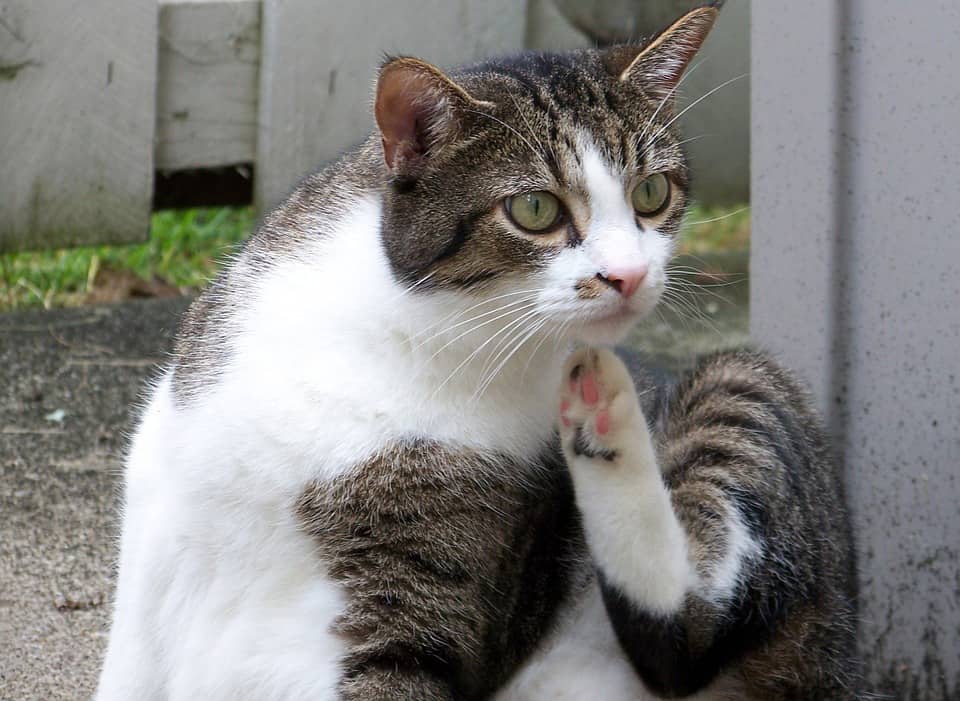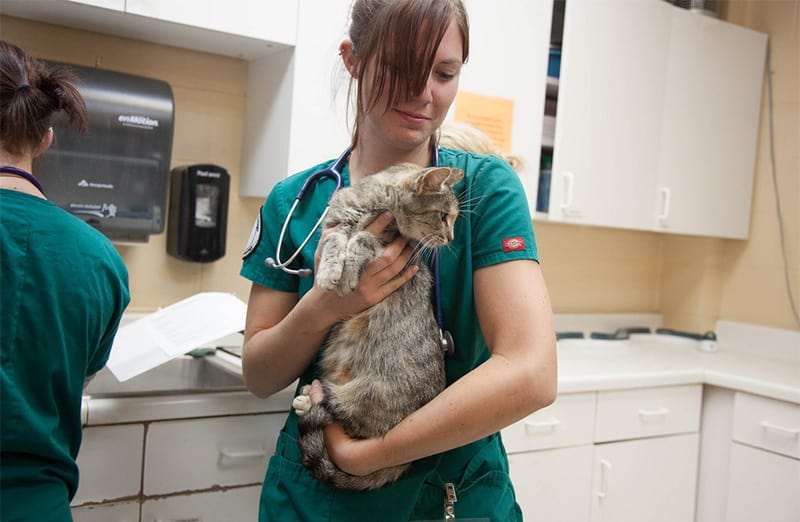What Are Cats Allergic to?
Humans’ allergies have been on the rise for decades and nobody knows exactly why. Some believe that the decreased amount of harmful parasites we have to face means our bodies overreact to allergens. Others suggest that our increasingly sanitized lifestyles mean our bodies aren’t exposed to enough allergens at a young age to build up an immunity. Whatever the reason, there is a lot of awareness around the growing number of allergies in humans. Like humans, cats experience a spectrum of allergies, however, there is far less awareness about them.
Allergies are when immune systems become sensitive to substances present in their surroundings. These irritating substances are known as allergens. Not all people or cats will react to allergens, and those that do may not react to the same degree. Some allergies are acuter than others, with severe allergies able to cause life-threatening illness and potential death.
In cats, allergies are divided into three broad categories: flea allergy, environmental allergies, and food allergies. The first two are the most common, however, there are a wide variety of allergies that fit into these categories. Moreover, cats can have multiple allergies that don’t necessarily fit into the same categories. Therefore, you should take your cat to a vet if you suspect that they might be experiencing allergic reactions.
Contents
What Are the Symptoms That Your Cat Is Allergic to Something?
In order to look after your cat’s health, you need to know how to spot the symptoms of a potential allergy. These are generally the same as the symptoms in human, however, you might not be as accustomed to looking for them in your pet. Symptoms vary slightly depending on the kind of allergy your cat has.
Flea Allergies
Many cats experience flea allergies, which results in extreme itchiness after only one or two bites from fleas. Whilst itching from fleas is normal, an allergy is an extreme reaction to a minimal amount of bites.
Cats who experience flea allergies are usually excessive self-groomers. This means that you may not even be able to find any trace of actual fleas, even if you can see the bites and the scratching associated with them.
If your cat is licking, biting or scratching regularly around the neck, thighs, belly, and base of the tail then it could be a sign that they are allergic to fleas. Cats will gnaw or rub irritated areas, so keep an eye out for this in your cat.
You should also look for red bumps or hair loss in these areas. Cats who are allergic to fleas may also get crusty little bumps called “miliary dermatitis” all over their bodies. Scratching can often make matters worse, leading to hair loss, raw skin and increased risk of infection.
Environmental Allergies
This is a broad category for a number of different allergies, the common factor being inhalant or contact allergens. These allergens can be found inside and outside the home.
A common environmental allergy in cats is pollen. Allergies to tree, weed and grass pollen are the most observed. These allergies tend to be seasonal at the beginning, only causing reactions when there is a higher than usual amount of pollen in the air. However, the allergy can develop to become more acute, becoming more of a continuous issue for aging cats.
Cats can also be allergic to agents inside the home, such as mold, dust or household mites. The main difference between these allergies and pollen allergies is that your cat is likely to exhibit symptoms all year round, rather than during changing seasons.
Cats who experience these allergies may lick, chew or scratch anywhere on their body. This can result in secondary issues if it causes hair loss, inflamed skin or infected wounds. If you see your cat exhibiting these symptoms, then schedule a visit to your vet for an intradermal (skin) or blood test.
Perfumes in cat litter or cleaning products can also cause allergic reactions in some cats. If you find that your cat is sneezing or becoming itchy after contact with these products, then it is likely that they are experiencing an allergic reaction. Try switching to unperfumed products and see whether this prevents the symptoms.
Food Allergy
These are the least common allergies in cats, accounting for about 10% of the allergies seen. There are no specific links between particular breeds and food allergies and they are seen equally in both males and females; neutered and unneutered. Food allergies can be seen as early as 5 months and as late as 12 years, although most cases are diagnosed between 2 and 6 years. Allergies to food tend to be seen alongside other allergies, such as environmental or flea allergies.
Food allergies are not understood well although it is generally thought that it is an antibody reaction to a particular agent in food, which occurs in the intestinal tract. Despite this lack of understanding, there is a lot more knowledge about the symptoms and treatment of food allergies in cats.
There is a difference between the symptoms of food allergies and food intolerances. They are caused by different processes in the body; whereas in an allergic cat antibodies are reacting to an allergen, cats with food intolerances will react to an irritant in food. It’s the difference between someone having a nut allergy, and someone needing to visit the toilet after too much spicy food.
Symptoms of a Food Allergy
- Itching (common)
- Skin problems such as miliary dermatitis (common)
- Hair loss (common)
- Vomiting (10 – 15%)
- Diarrhoea (10 – 15%)
The itching that signals the presence of a food allergy is caused by small, pale, fluid-filled lumps on a cat’s skin. These are triggered by the presence of the allergen. Scratching these lumps can also result in secondary skin wounds which are very susceptible to infection.
Symptoms of a Food Intolerance
- Vomiting
- Diarrhoea
These gastrointestinal problems can have long-lasting implications if left untreated, including food avoidance which can result in extreme weight loss.
How to Treat Allergies in Cats
In order to diagnose and treat an allergy, you will need to visit a vet. They can then perform the necessary tests on your cat to understand exactly what is causing their symptoms. Here is some general information on what to expect in your cat’s treatment.
Flea Allergies
The best way to treat flea allergies is to try and prevent flea infestations in the first place. Regular use of flea control medication that contains an adulticide (to kill adult fleas) and an insect growth regulator (to prevent young fleas growing up and reproducing) is the best way to control flea allergies.
If your cat suffers secondary infections scratching flea bites, then they may need to take antibiotics or an antifungal medication. Your vet may also recommend antihistamines or steroids if your cat is particularly struggling with the itching.
Environmental Allergies
If your cat is suffering from a seasonal pollen allergy, keeping your cat indoors and using an air conditioner/air filter during peak times can help reduce their exposure to pollen. For household allergens, you will need to tackle the cause of the reaction i.e. any mold, dust or mites. You should also consider bathing, or at least wiping their fur with a damp cloth, to remove pollen trapped in the fur. Your vet may also prescribe antihistamines, immunosuppressive drug or fatty acid supplements to reduce symptoms.
Food Allergies
After your cat has been diagnosed with a food allergy, they will need to follow a diet which avoids their allergen. Whilst some cats can eat over-the-counter hypoallergenic foods, some allergies will require more regulated food available through your vet.
If you suspect that your cat is suffering from an allergy, look at the specific symptoms and discuss these with your vet to find an appropriate treatment. Treatment will avoid secondary illnesses such as infections, and ensure your cat is happy and comfortable.





